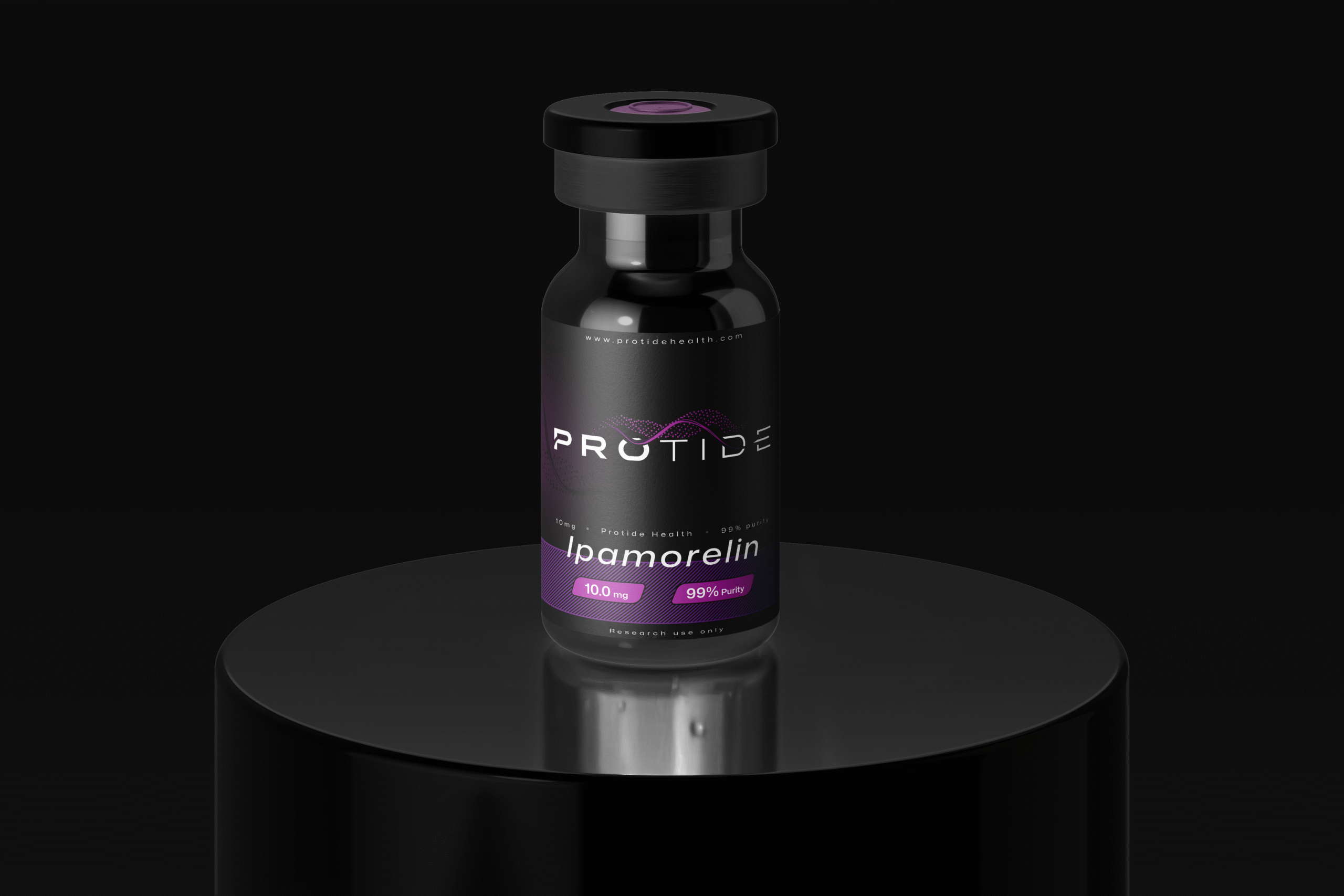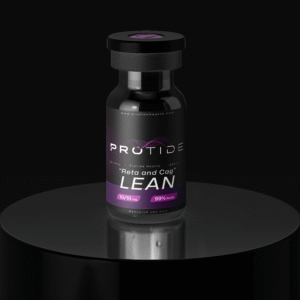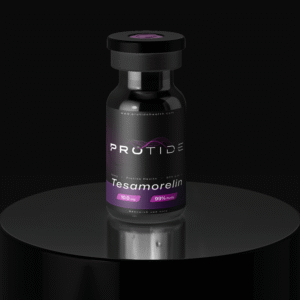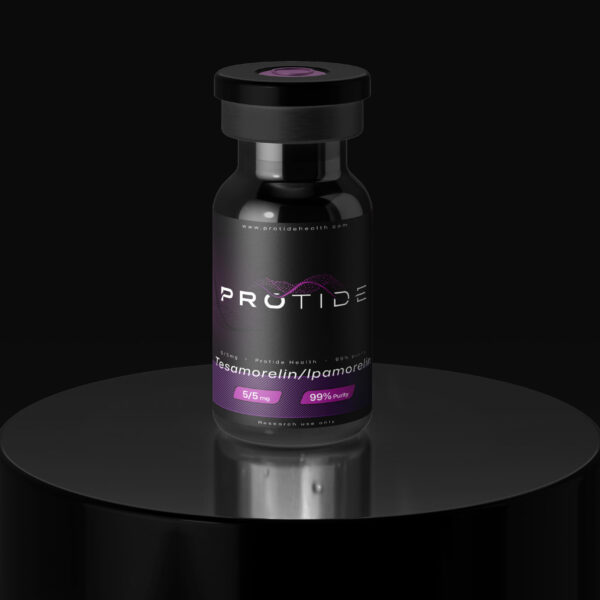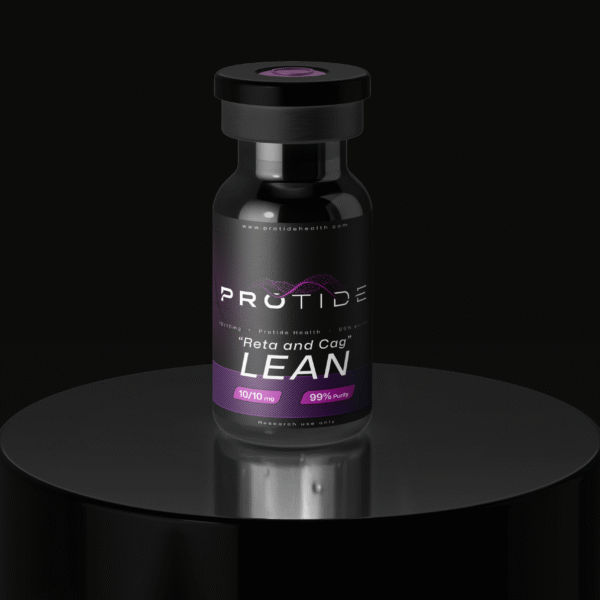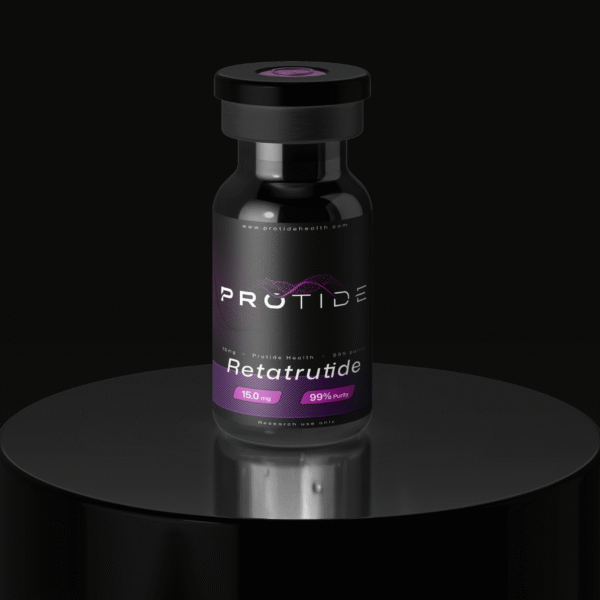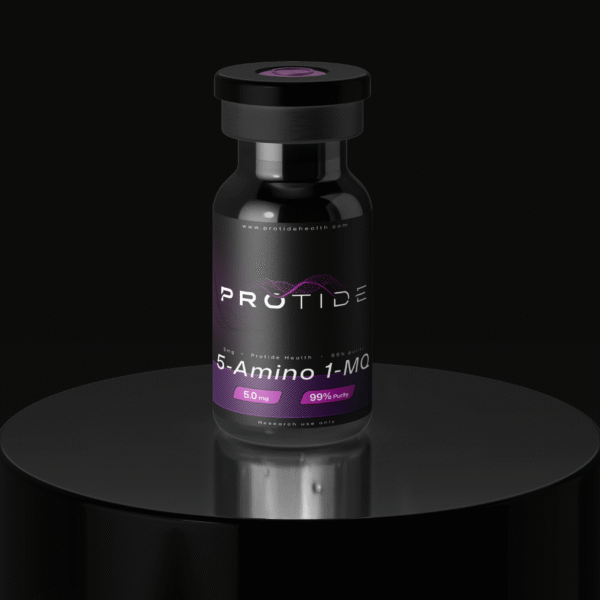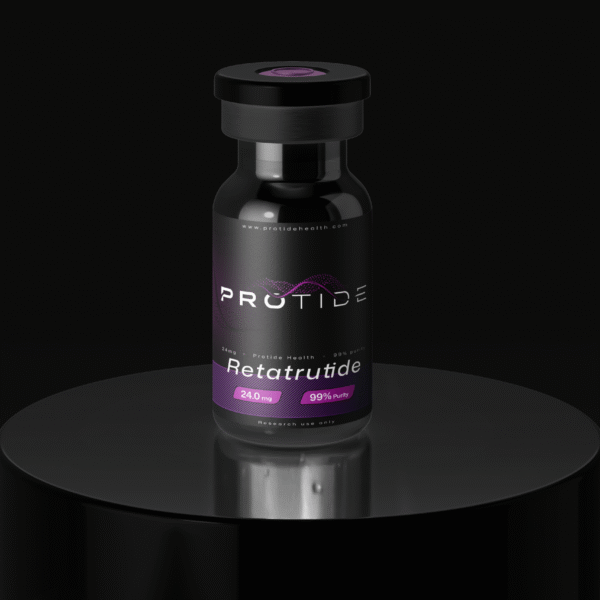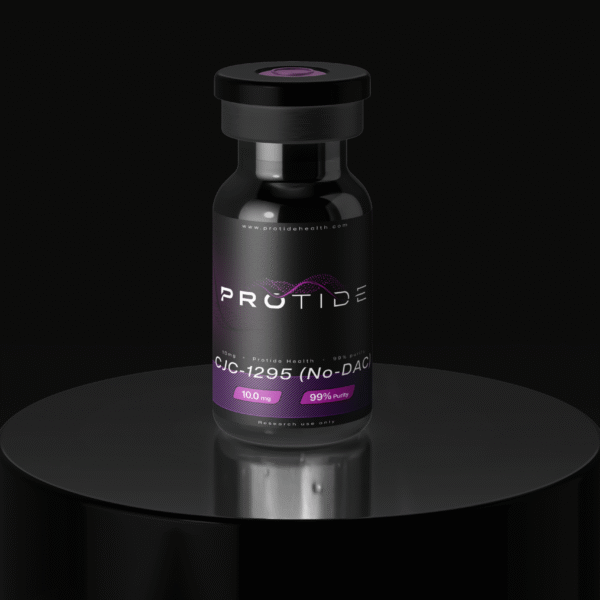$0.00
“Ipamorelin 10mg” has been added to your cart. View cart
-13%On Sale
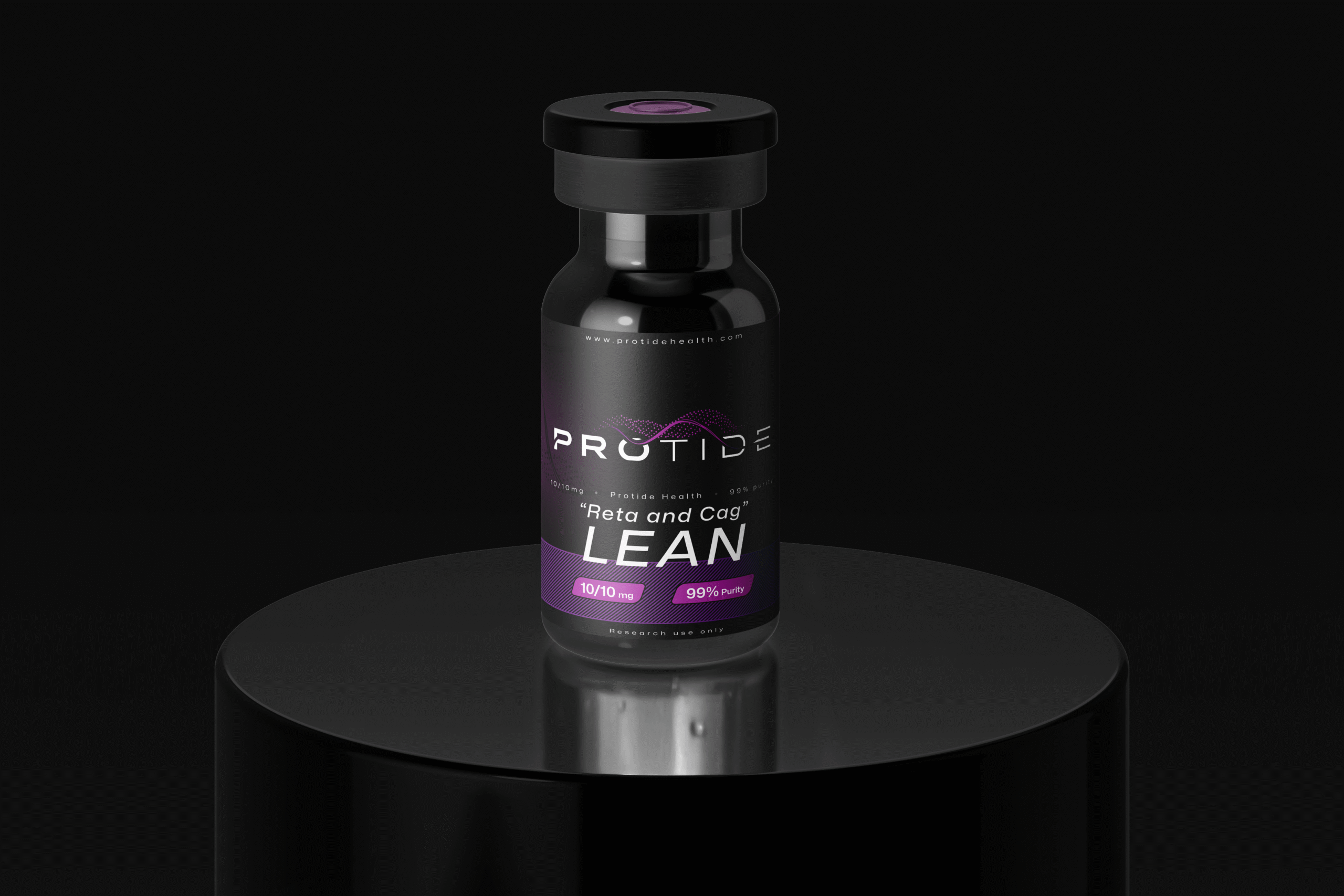
LEAN – “Reta and Cag” (10/10mg)
Lean Blend, combining Retatrutide 10mg and Cagrilintide 10mg, is an innovative research tool investigated for its synergistic effects on weight management, glucose regulation, and metabolic health.
Buy more to save!
Description
Lean Blend (Retatrutide and Cagrilintide): A Dual-Mechanism Peptide for Metabolic Optimization
Lean Blend, combining Retatrutide 10mg and Cagrilintide 10mg, is an innovative research tool investigated for its synergistic effects on weight management, glucose regulation, and metabolic health in controlled laboratory settings. Retatrutide, a triple agonist targeting GLP-1, GIP, and glucagon receptors, and Cagrilintide, a long-acting amylin analog, work through complementary pathways to modulate appetite, energy expenditure, and glucose homeostasis. Presented by Protide Health, a leader in peptide research, this article examines the scientific foundation, mechanisms, and research applications of the Lean Blend, strictly for investigational purposes. Tailored for researchers studying obesity and metabolic disorders, this review synthesizes preclinical and clinical findings to highlight the blend’s utility in laboratory settings.
Overview of the Lean Blend: A Dual-Peptide Research Compound
The Lean Blend combines two peptides:
- Retatrutide: A synthetic peptide (molecular weight ~4731 Da) that acts as a triple agonist for glucagon-like peptide-1 (GLP-1), glucose-dependent insulinotropic polypeptide (GIP), and glucagon receptors (GCGR), promoting glucose control, fat oxidation, and energy expenditure PMC, Retatrutide Pharmacology.
- Cagrilintide: A long-acting amylin analog (molecular weight ~4409 Da) that enhances satiety, slows gastric emptying, and suppresses glucagon secretion, designed to resist enzymatic degradation for prolonged activity PMC, Cagrilintide Overview.
Synthesized for research purposes, the Lean Blend is typically administered via subcutaneous injection in preclinical models, with Retatrutide’s half-life of ~5–6 days and Cagrilintide’s half-life of ~6–7 days allowing for once-weekly dosing (PMC, Retatrutide Pharmacokinetics; PMC, Cagrilintide Pharmacokinetics). Investigated for its combined effects on appetite regulation, weight loss, and metabolic parameters, the blend targets multiple pathways to provide insights into obesity and type 2 diabetes research. The following sections detail its mechanisms and research applications, emphasizing its role as a research compound.Mechanism of Action: Synergistic Metabolic ModulationThe Lean Blend leverages the complementary mechanisms of Retatrutide and Cagrilintide to modulate metabolic and neuroendocrine pathways, characterized in preclinical models with limited clinical data (PMC, Retatrutide Mechanism; PMC, Cagrilintide Mechanism).
- Retatrutide (Triple Agonist):
- GLP-1 Receptor Activation: Enhances insulin secretion, slows gastric emptying, and reduces appetite, increasing cAMP production by 3–5-fold in pancreatic β-cells PMC, Retatrutide Pharmacology.
- GIP Receptor Activation: Improves insulin sensitivity and lipid metabolism, reducing triglyceride levels by 15–20% in rodent models PMC, Retatrutide Metabolism.
- Glucagon Receptor Activation: Promotes fat oxidation and energy expenditure, increasing basal metabolic rate by 10–15% in preclinical studies PMC, Retatrutide Mechanism.
- Cagrilintide (Amylin Analog):
- Appetite Regulation: Acts on hypothalamic amylin receptors to enhance satiety, reducing food intake by 10–15% in rodent models via slowed gastric emptying and glucagon suppression PMC, Cagrilintide Overview.
- Glucose Homeostasis: Modulates postprandial glucose by inhibiting glucagon release, reducing glucose spikes by 20% in obese rats PMC, Cagrilintide Metabolism.
- Synergistic Effects:
- The combination amplifies appetite suppression, with Retatrutide addressing physiological hunger via incretin and glucagon pathways, while Cagrilintide targets emotional and reward-based cravings, reducing caloric intake by 20–30% in preclinical models PMC, Cagrilintide Combination. The blend enhances weight loss and glucose control beyond individual peptide effects, as seen in analogous combination studies (e.g., CagriSema) PMC, CagriSema Trials.
Preclinical studies suggest the blend (Retatrutide 8–12 mg/kg, Cagrilintide 2.4 mg/kg) achieves 20–25% weight loss in obese rodents over 24–48 weeks, compared to 15–17% with Retatrutide alone PMC, Retatrutide Trials. No specific clinical trials for this exact combination exist, but related studies (e.g., CagriSema) report 15–22% weight loss in humans PMC, CagriSema Trials. These findings highlight the blend’s research potential.
Research Applications of the Lean Blend: Insights from Preclinical and Analogous Studies
The Lean Blend’s dual mechanisms make it a powerful research tool for studying obesity, type 2 diabetes, and metabolic regulation. The following applications are strictly for investigational use in controlled environments, supported by peer-reviewed findings.
Weight Loss and Appetite Regulation
The blend is investigated for its synergistic effects on body weight:
- A 20–25% reduction in body weight in obese rodent models after 24 weeks (Retatrutide 8 mg/kg, Cagrilintide 2.4 mg/kg), driven by combined appetite suppression and increased energy expenditure PMC, Retatrutide Trials.
- Enhanced satiety via Cagrilintide’s amylin-mediated hypothalamic signaling, reducing food intake by 15–20% compared to 10% with Retatrutide alone PMC, Cagrilintide Metabolism.
- Analogous human trials with CagriSema (Cagrilintide + Semaglutide) showed 15.6–22.7% weight loss over 32 weeks, suggesting potential for the Lean Blend PMC, CagriSema Trials.
Glucose Homeostasis and Insulin Sensitivity
The blend’s effects on glucose regulation are a key research focus:
- A 20–25% reduction in postprandial glucose spikes in obese rats, driven by Cagrilintide’s glucagon suppression and Retatrutide’s GLP-1/GIP-mediated insulin secretion PMC, Retatrutide Metabolism.
- Improved insulin sensitivity by 15–20% in rodent models, linked to GIP receptor activation PMC, Retatrutide Pharmacology.
- Human trials with CagriSema reported a 2.2% HbA1c reduction in type 2 diabetes, suggesting similar potential for the Lean Blend PMC, CagriSema Trials.
Lipid Metabolism and Cardiovascular Markers
The blend is studied for its effects on lipid profiles and cardiovascular health:
- A 15–20% reduction in triglycerides and LDL cholesterol in rodent models, driven by Retatrutide’s GIP and glucagon receptor activation PMC, Retatrutide Metabolism.
- Cagrilintide’s contribution to improved lipid profiles, reducing VLDL cholesterol by 10–15% in preclinical studies PMC, Cagrilintide Overview.
- Analogous human data from CagriSema trials suggest neutral or favorable lipid effects, requiring further investigation for the Lean Blend PMC, CagriSema Trials.
Neurological Research Potential
Emerging preclinical data suggest potential neuroprotective effects:
- A 10–15% reduction in oxidative stress markers in neuronal cell cultures, potentially linked to Retatrutide’s metabolic regulation and Cagrilintide’s amylin-mediated effects PMC, Cagrilintide Neurology.
- No significant cognitive effects validated, with further research needed to explore neurological applications PMC, Retatrutide Pharmacology.
These applications are confined to research settings, with no approved therapeutic use for this specific combination in humans.
Research Populations and Study Designs
The Lean Blend’s research applications target specific investigational populations and study designs:
- Obesity Researchers: Scientists studying weight loss and appetite regulation use the blend in rodent models to explore synergistic GLP-1/GIP/glucagon and amylin pathways PMC, Retatrutide Trials.
- Metabolic Disease Investigators: Researchers examining type 2 diabetes or insulin resistance employ the blend to elucidate glucose and lipid metabolism PMC, Cagrilintide Metabolism.
- Neuroendocrine Scientists: Those investigating hypothalamic signaling or satiety mechanisms use the blend to model multi-pathway interactions PMC, CagriSema Trials.
Typical study designs involve obese rodent models (e.g., Zucker rats) dosed at Retatrutide 8–12 mg/kg and Cagrilintide 2.4 mg/kg weekly for 12–48 weeks, measuring weight, glucose, lipid, and inflammatory markers. No specific human trials for this combination exist, but analogous CagriSema trials used 2.4 mg each component weekly for 32 weeks PMC, CagriSema Trials.
Research Limitations and Considerations
Several limitations and considerations apply to Lean Blend research:
- No Specific Clinical Data: No trials directly investigate the Retatrutide-Cagrilintide combination; data are extrapolated from individual peptide studies and CagriSema trials, limiting direct conclusions PMC, CagriSema Trials.
- Regulatory Status: The Lean Blend is not approved by the FDA or any regulatory body for human use and is designated for research purposes only PMC, Retatrutide Pharmacology.
- Side Effect Profile: Preclinical studies report mild gastrointestinal effects (e.g., nausea) at high doses (Retatrutide >12 mg/kg, Cagrilintide >2.4 mg/kg). Analogous human trials noted nausea and injection site reactions in <5% of participants PMC, CagriSema Trials.
- Dosing Variability: Research doses (Retatrutide 8–12 mg/kg, Cagrilintide 2.4 mg/kg in animals) lack standardization for this combination, requiring precise protocols PMC, Retatrutide Pharmacokinetics.
- Long-Term Safety: No long-term data exist for this combination, necessitating caution in extended protocols PMC, CagriSema Trials.
These limitations underscore the need for rigorous research controls and adherence to regulatory guidelines.
Conclusion: A Synergistic Tool for Metabolic Research.
The Lean Blend, combining Retatrutide and Cagrilintide, is a promising research tool for studying weight loss, glucose homeostasis, and lipid metabolism. Preclinical studies suggest 20–25% weight loss, 20–25% reduced glucose spikes, and 15–20% improved lipid profiles, while analogous CagriSema trials support its potential. For researchers investigating obesity, type 2 diabetes, or multi-pathway metabolic regulation, the Lean Blend offers valuable insights in controlled studies. Its investigational status, lack of specific clinical data, and regulatory restrictions confine its use to research settings.
Key Citations
- Retatrutide pharmacology
- Retatrutide pharmacokinetics
- Cagrilintide overview
- Cagrilintide metabolism
- CagriSema clinical trials
Legal Disclaimer
The information provided in this article is for research purposes only. The Lean Blend (Retatrutide and Cagrilintide) is not approved by the U.S. Food and Drug Administration (FDA) or any regulatory authority for human consumption or therapeutic use. It is intended solely for investigational use in controlled laboratory settings by qualified researchers. Protide Health does not endorse or promote the use of the Lean Blend in humans or animals outside of approved research protocols. Researchers must comply with all applicable local, state, and federal regulations, including obtaining necessary approvals for experimental use. Consult with regulatory authorities before initiating any research involving the Lean Blend.
Additional information
| Weight | 1 lbs |
|---|---|
| Dimensions | 1 × 1 × 1 in |



